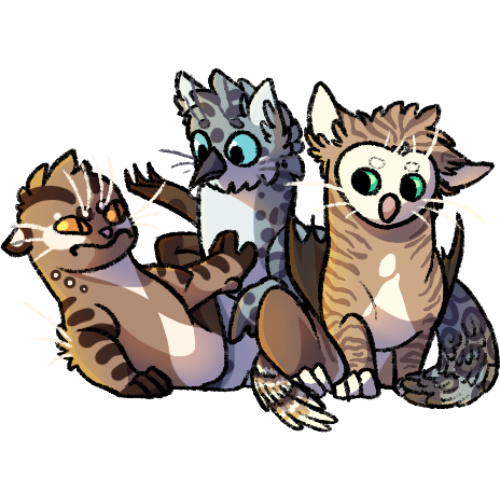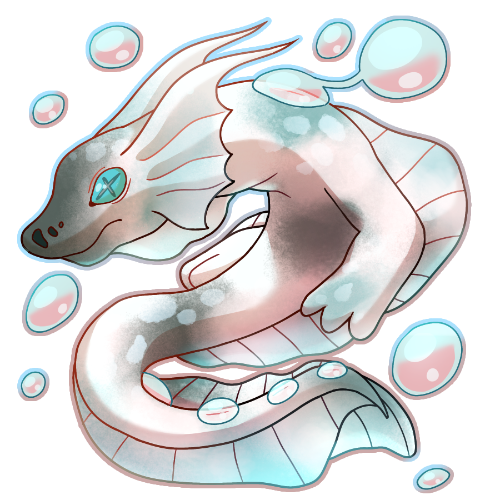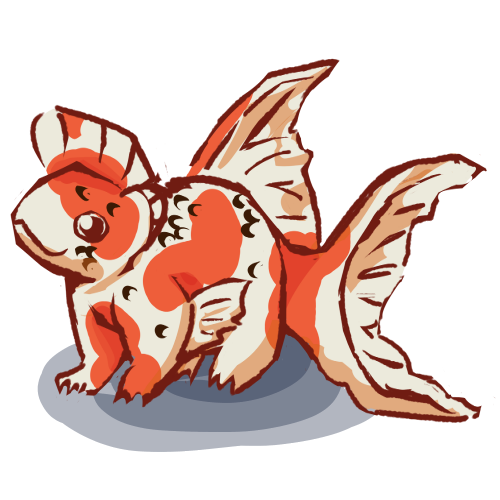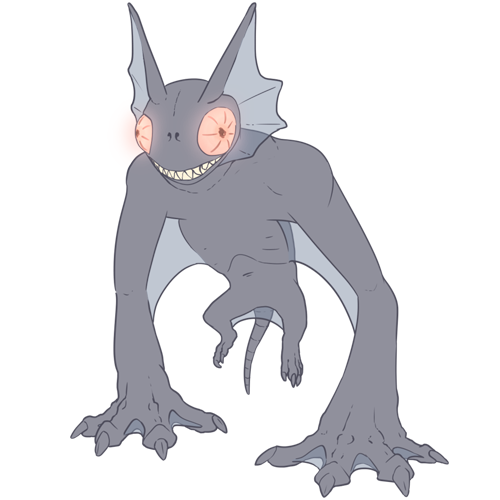Goblin
Goblins are short creatures with large, sinister, toothy grins. Most describe them to be 'bat-like' in appearance, as between their arms, legs, and digits is a thin skin membrane that allows them to glide short distances between trees. Their arms are extremely long and bony, and they use them to ambulate, as their legs have evolved to be small and near useless except for gripping branches. Goblins also have a short, rat like tails, and two 'fins' on their heads that help the goblin make sharp turns while in flight.




















